Kenrick Seminary
.jpg?ver=2020-10-28-120727-777)
.jpg?ver=2020-10-28-120751-920)
.jpg?ver=2020-10-28-121608-917)
.jpg?ver=2020-10-28-121731-470)
In 1900, Archbishop John J. Kain opened Kenrick Seminary at the former Visitation Convent located at 19th Street and Cass Avenue in St. Louis. The rapid growth of the seminary quickly outgrew the aging campus, and Archbishop John J. Glennon sought a new site for the seminary.
On April 13, 1913, Archbishop Glennon broke ground for the construction the new building, and the dream of an Archdiocesan seminary was realized. By September 1915, Kenrick Seminary was complete and it opened its doors to 160 seminarians as home and school.
The new seminary was officially consecrated on April 27, 1916, with a four day celebration.
In 1987, Kenrick Seminary and Glennon College merged to form Kenrick-Glennon Seminary at its current home of 5200 Glennon Drive. The former Kenrick Seminary building became the Archdiocesan Pastoral Center. It housed several offices with around 70 employees, and also acted as a retreat center.
In 2003 after major renovations on the building, it was named the Cardinal Rigali Center in honor of then-Archbishop Justin Rigali who was determined to preserve and enhance its purpose as an administrative center.
Oldest Document in the Archives: Fragment of the original 1771 contract between Rev. Sebastian Meurin, S.J. and the trustees to staff St. Joseph church in Prairie de Rocher, IL
.jpg?ver=2020-10-28-121248-573)
.jpg?ver=2020-10-28-121312-563)
Prairie du Rocher in present-day Illinois was an important town just across the Mississippi River from Ste. Genevieve in present-day Missouri. In 1771, Jesuit Father Louis Sebastian Meurin signed this contract with the town leaders of Prairie du Rocher to be pastor at St. Joseph Parish there.
Father Meurin was an important missionary in the area, particularly to the native Illinois tribes and early European settlers. Fr. Meurin performed the first baptism on record at the Old Cathedral in 1766 “in a tent for want of a church.” After the Seven Years War, France ceded the land east of the Mississippi to Britain. While pastor at Ste. Genevieve, Fr. Meurin was exiled by the Spanish governor because he had pledged loyalty to the French diocese of Quebec instead of to British rule. He settled in Prairie du Rocher, where he lived out his life and ministry until his death in 1777.
Sacramental Registers
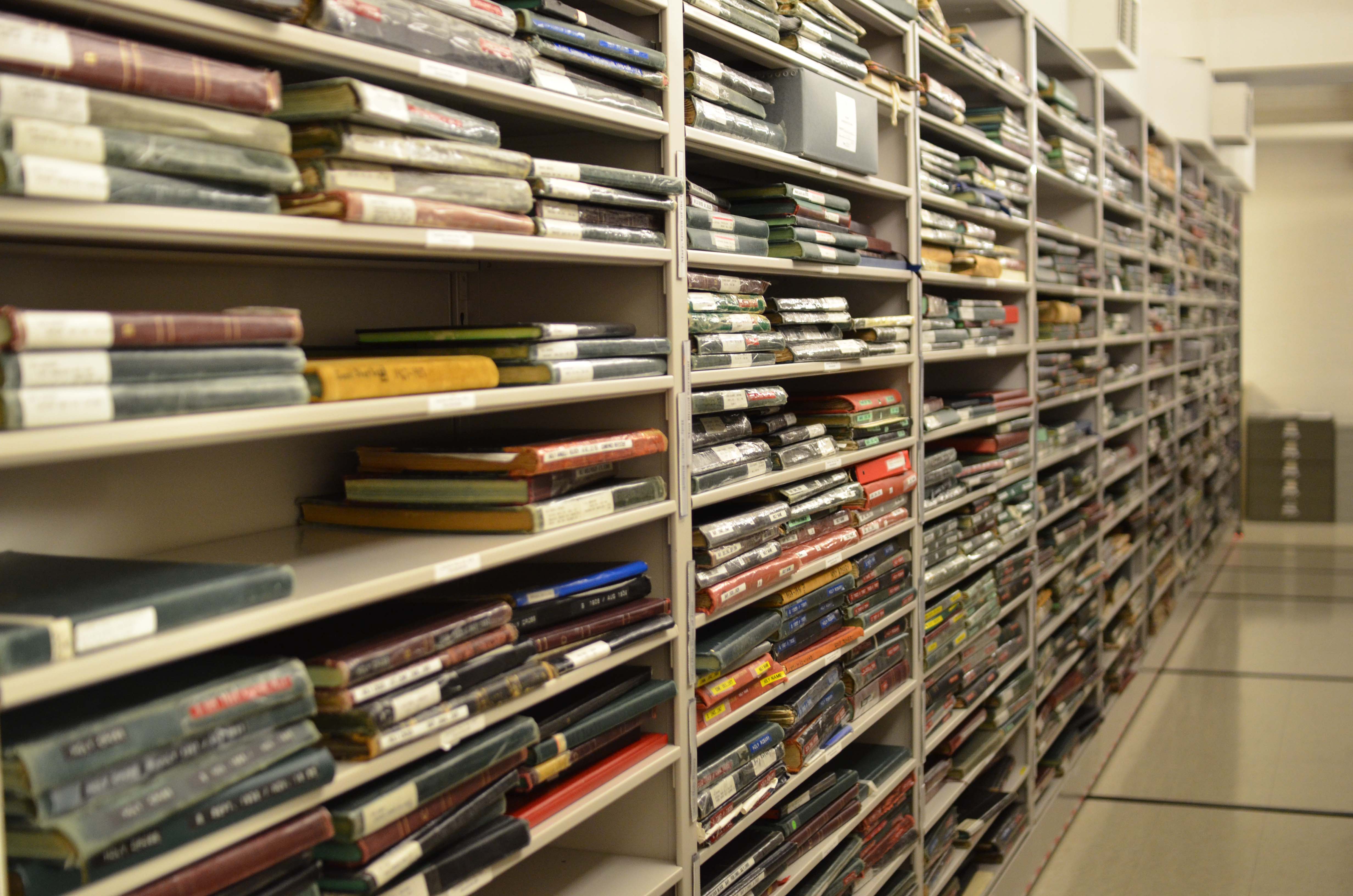
The archives holds 2,287 sacramental registers in its temperature- and humidity-controlled stacks. The registers belonged to parishes and chapels that were closed. The registers are living documents that record the spiritual lives of Catholics in those communities, including baptism, first communion, confirmation, marriage, professions of faith, and death. These records are actively used to reference a Catholic’s sacramental life, and are therefore often requested from the archives. In 2019, the archives issued close to 500 sacramental certificates from these registers.
Holy Cross Baptism Register, 1864-1905
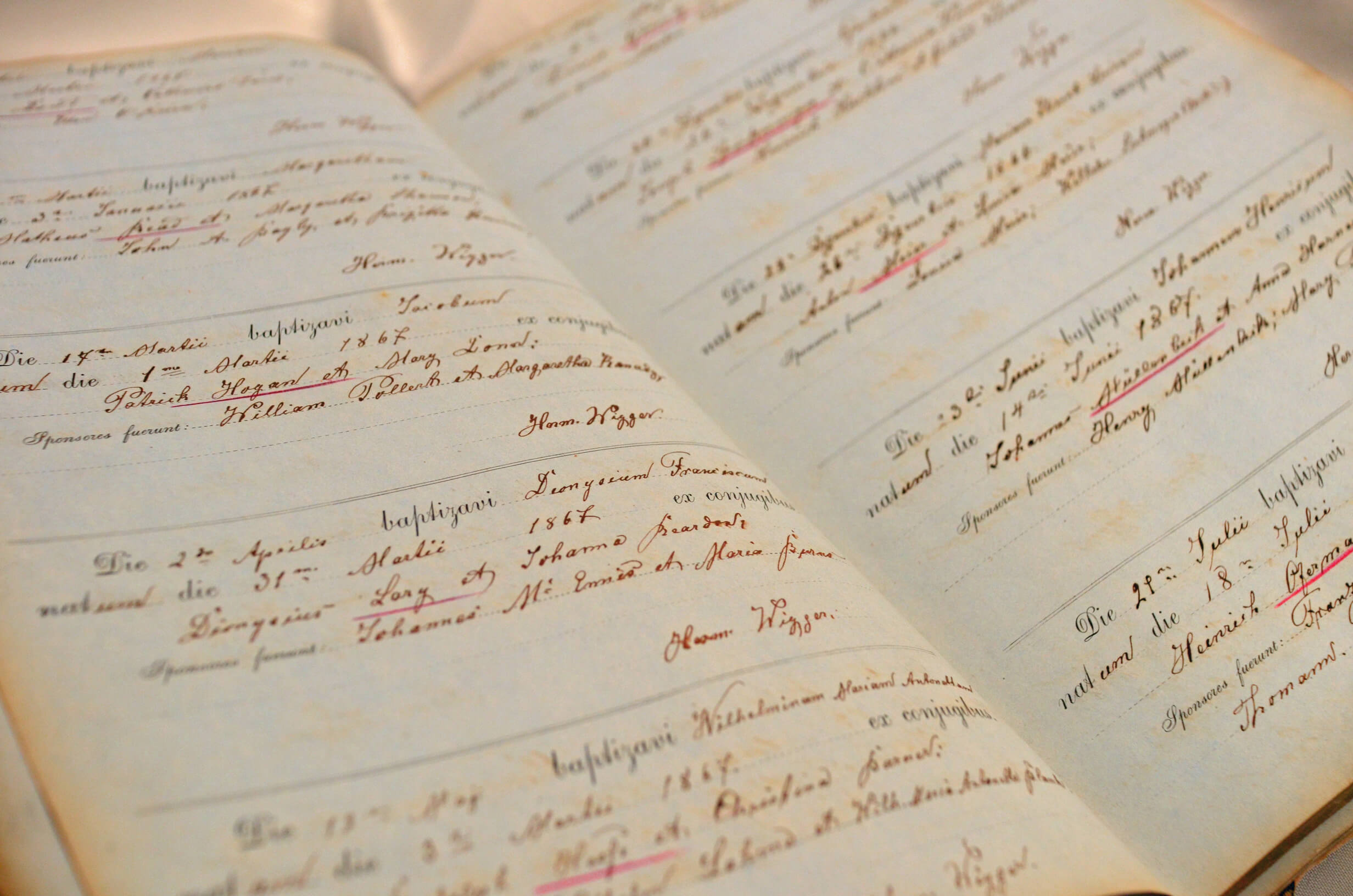
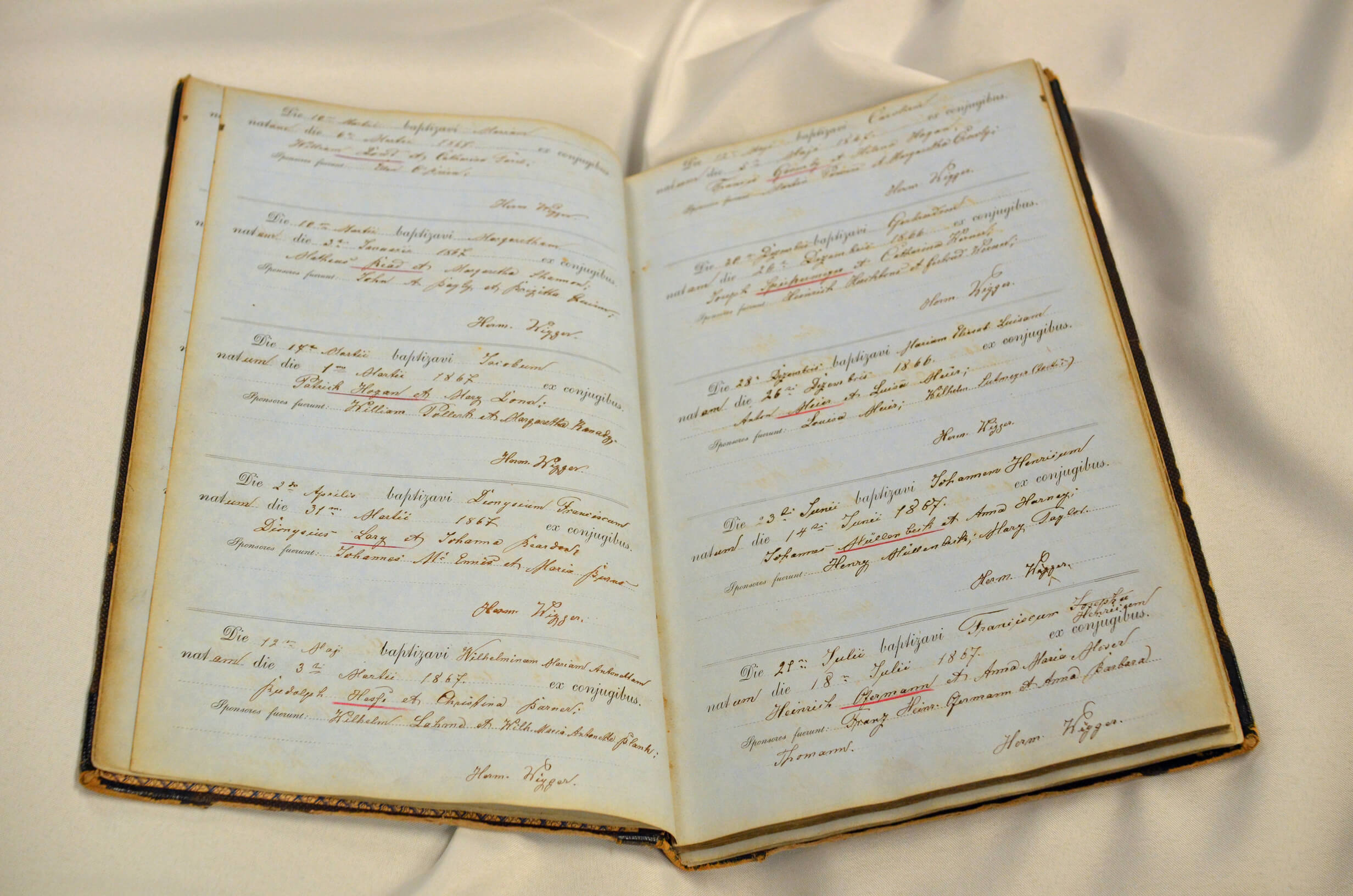
Holy Cross was originally a German-speaking parish established on the north side of St. Louis in 1863. It closed in 1993. This baptismal register for Holy Cross has blue-tinted pages, and the handwriting is beautiful. After years of handling and use, some of the pages are detached from the binding. The archives staff minimizes handling of older registers to prevent wear and tear on them.
Sts. Mary and Joseph Marriage Registers
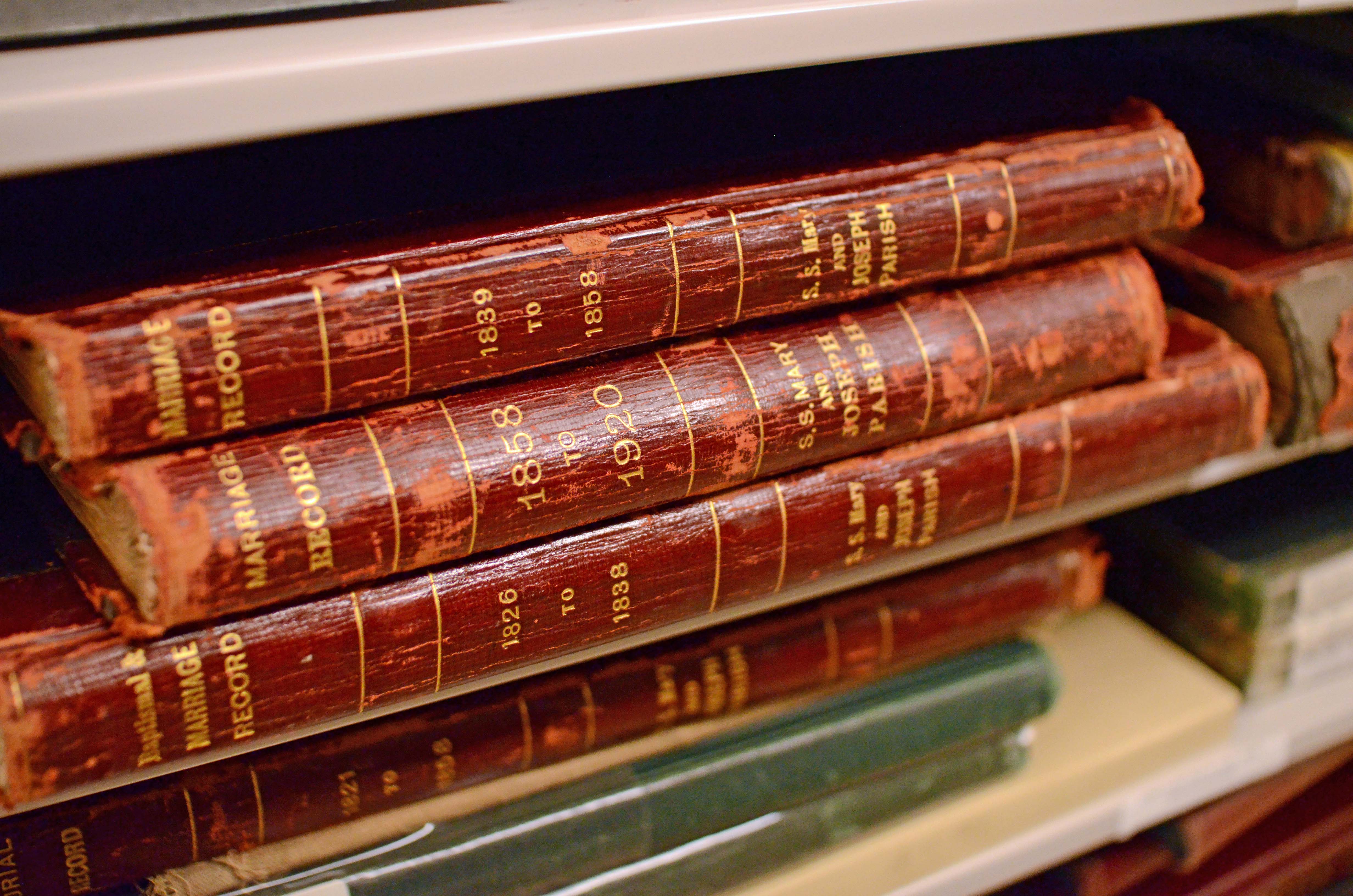
Sts. Mary and Joseph was established in 1821 in the town of Carondelet, which annexed as a neighborhood to the City of St. Louis in 1870. In 2005, the territorial parish was closed and the church became a chapel.
St. Columbkille registers
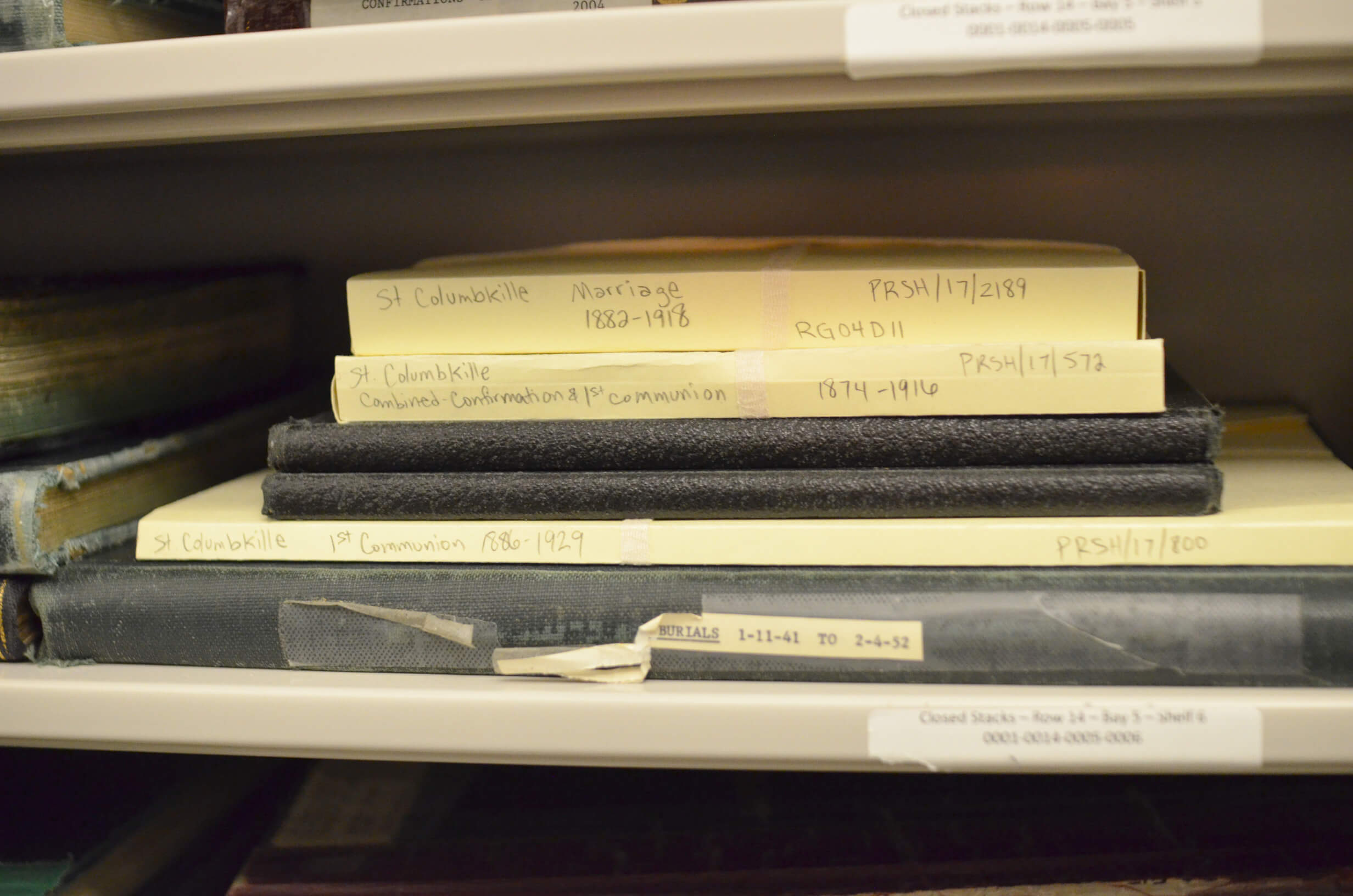
These registers from St. Columbkille were in very poor condition, so they have been housed in form-fitting “phase boxes” to preserve them. St. Columbkille was established in 1872 as an Irish National church, and closed in 1952.
Father John A. Feckter Photographs
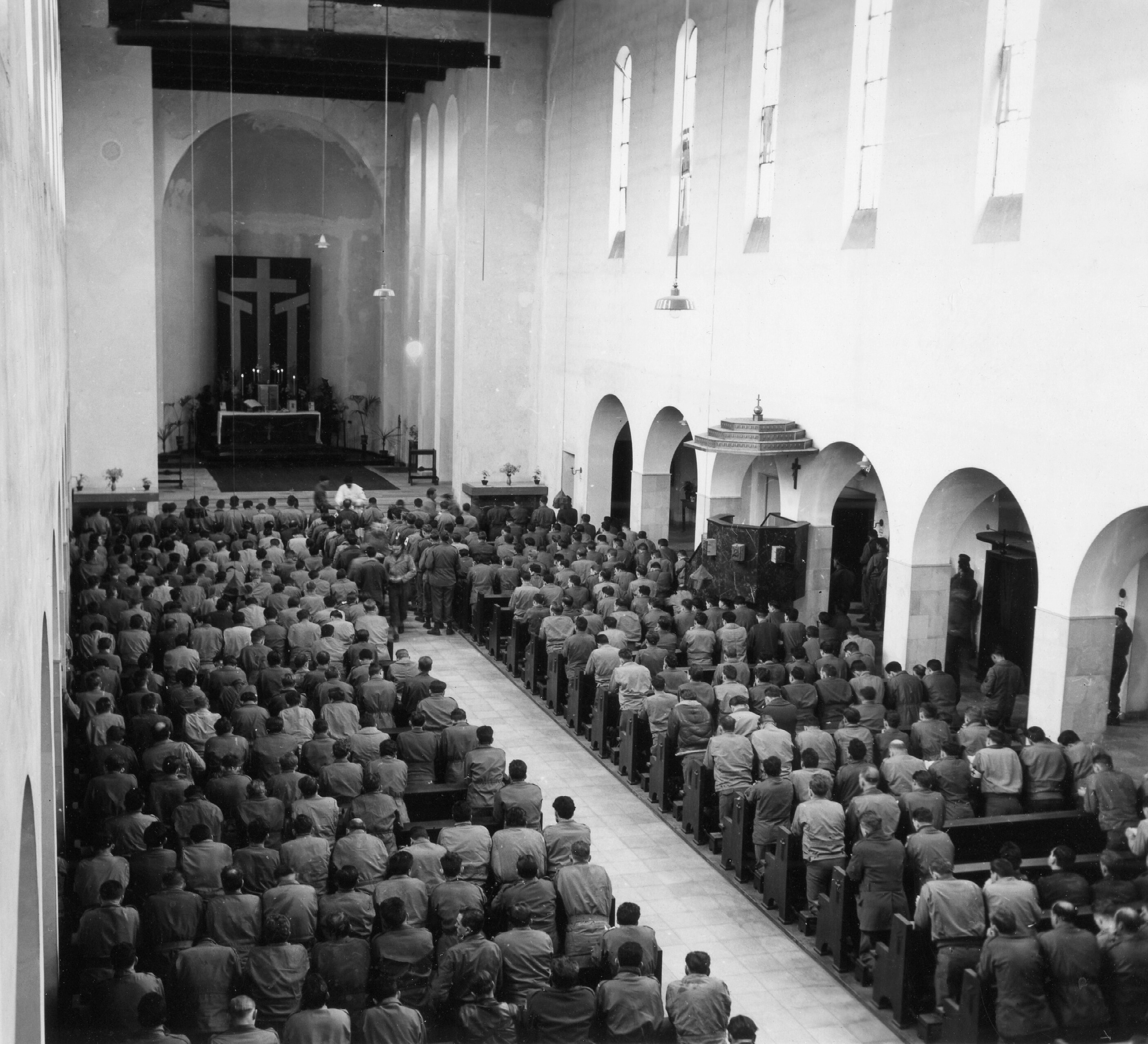
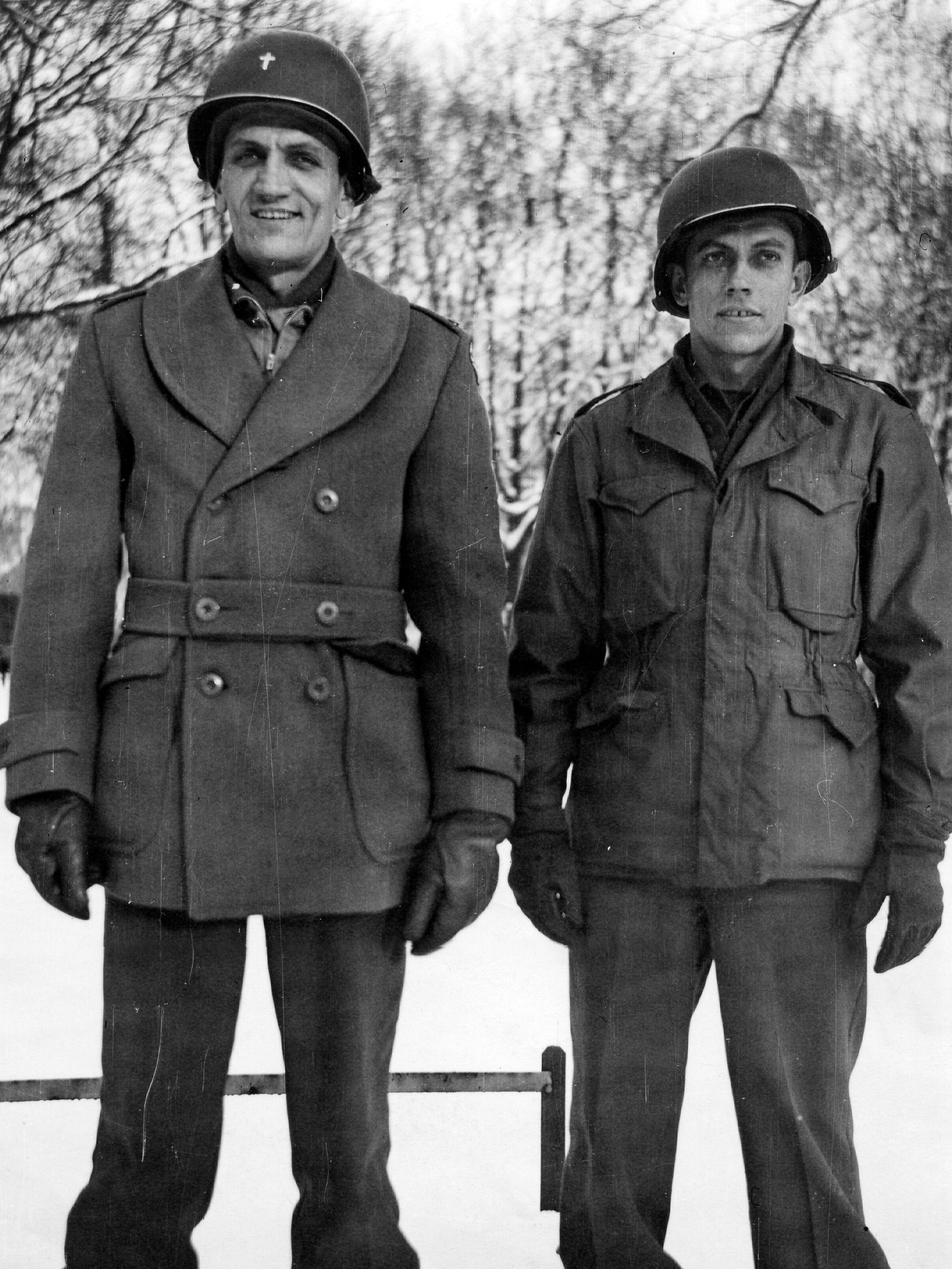
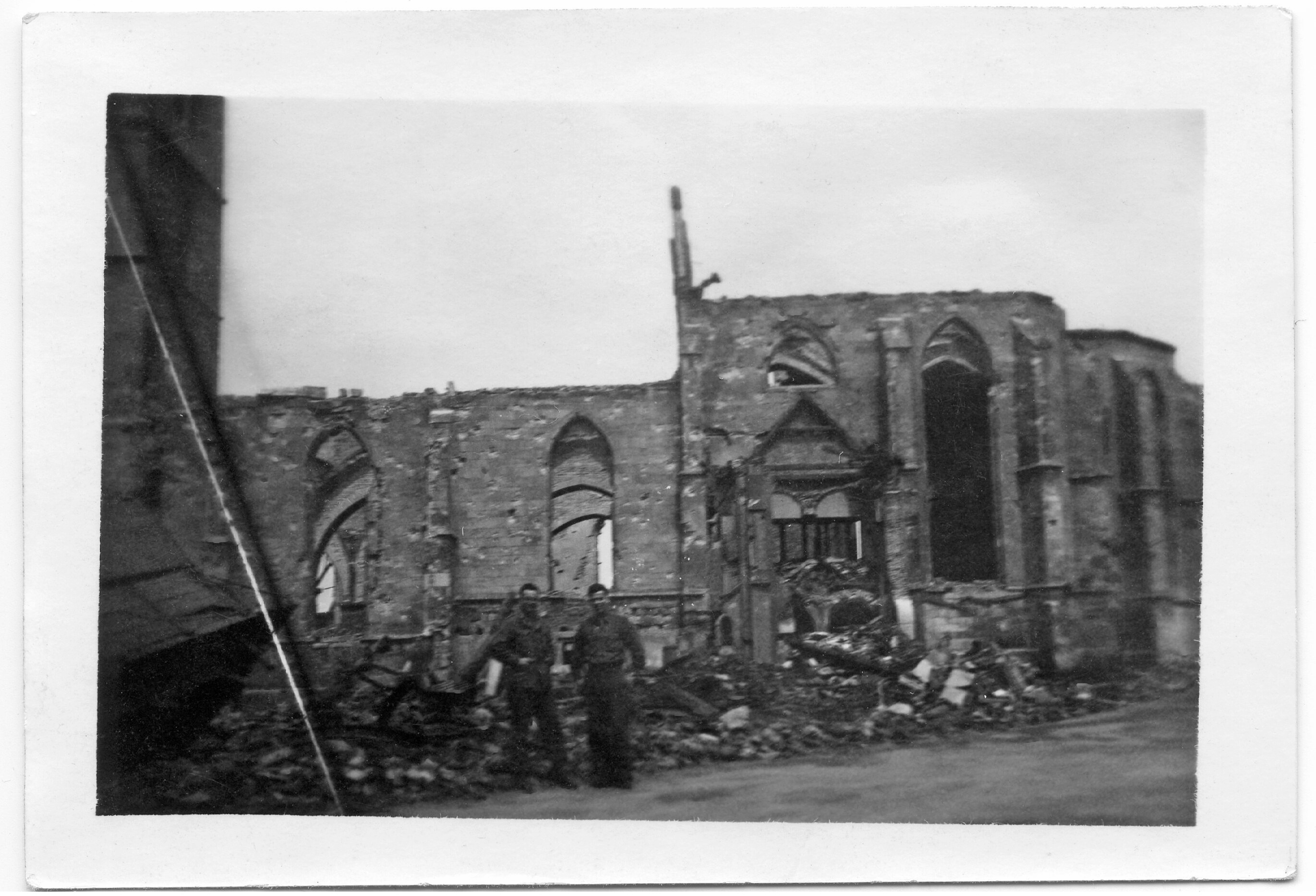
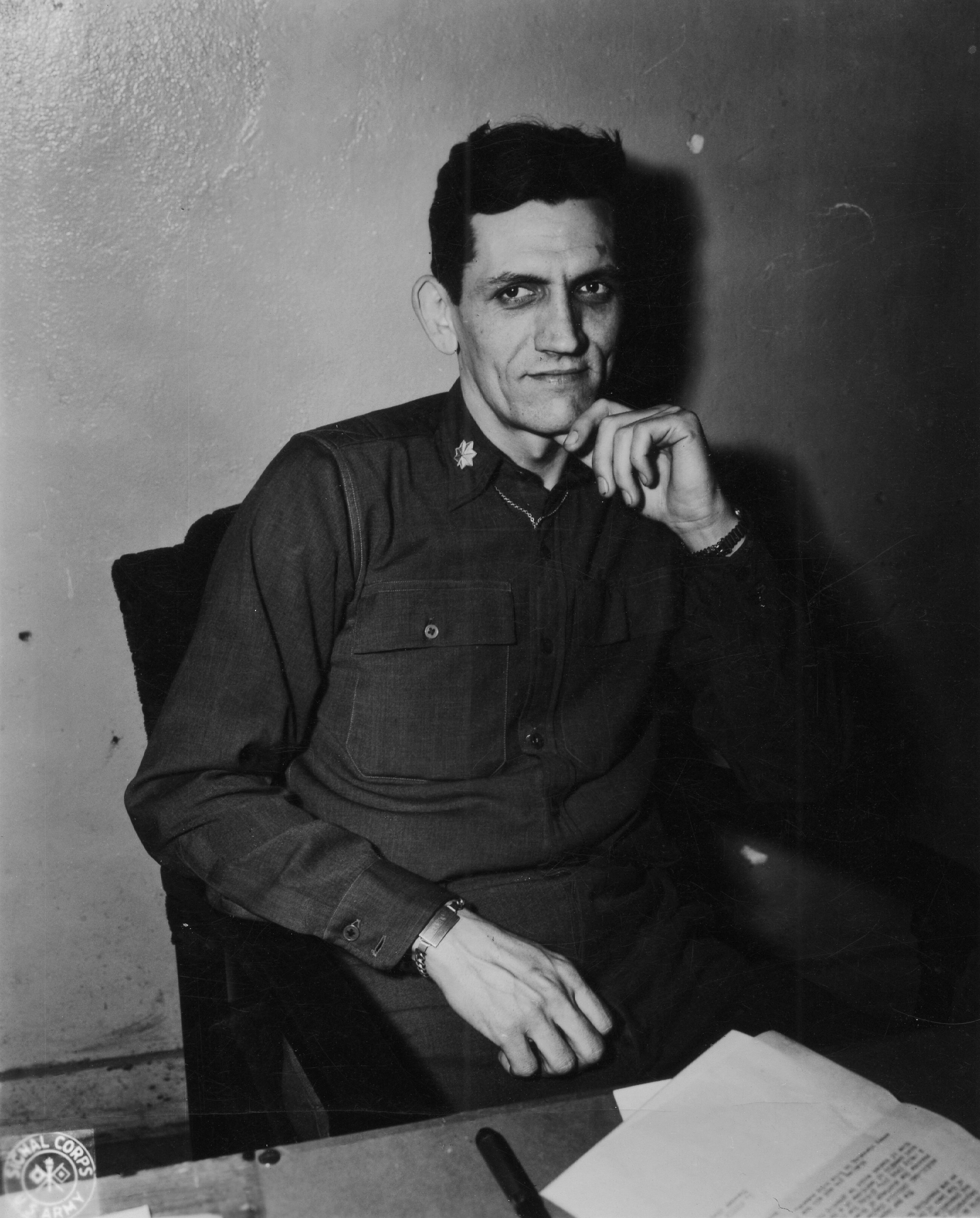
Father John Feckter was one of the first St. Louis priests to enlist in the armed forces during World War II. He served as a chaplain in the U.S. Ninth Army from 1941 to 1945 in Scotland, England, France, Belgium, Luxembourg, Holland and Germany. During an interview with KMOX reporter Cy Caspar, Fr. Feckter told his story of serving Midnight Mass on Christmas Eve in Belgium as Germans strafed the area from overhead while serving during the Battle of the Bulge. Father Feckter was awarded the Bronze Star in 1947. The few dozen photographs that were donated to the archives with Fr. Feckter’s papers illustrate the danger, destruction, and brief moments of joy during his overseas service.
Photo of Bishop Koester with Babe Ruth and Yogi Berra, 1948
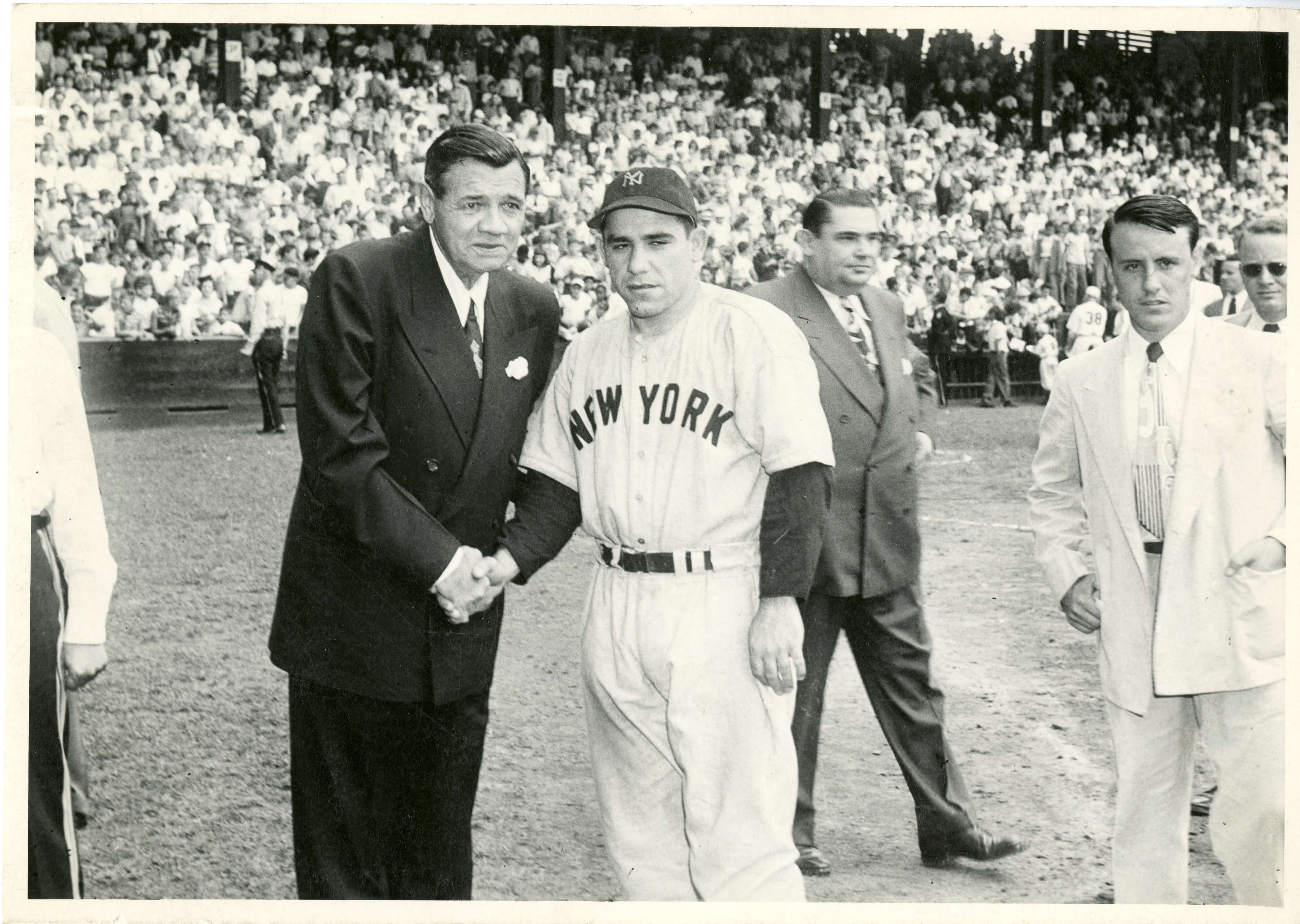
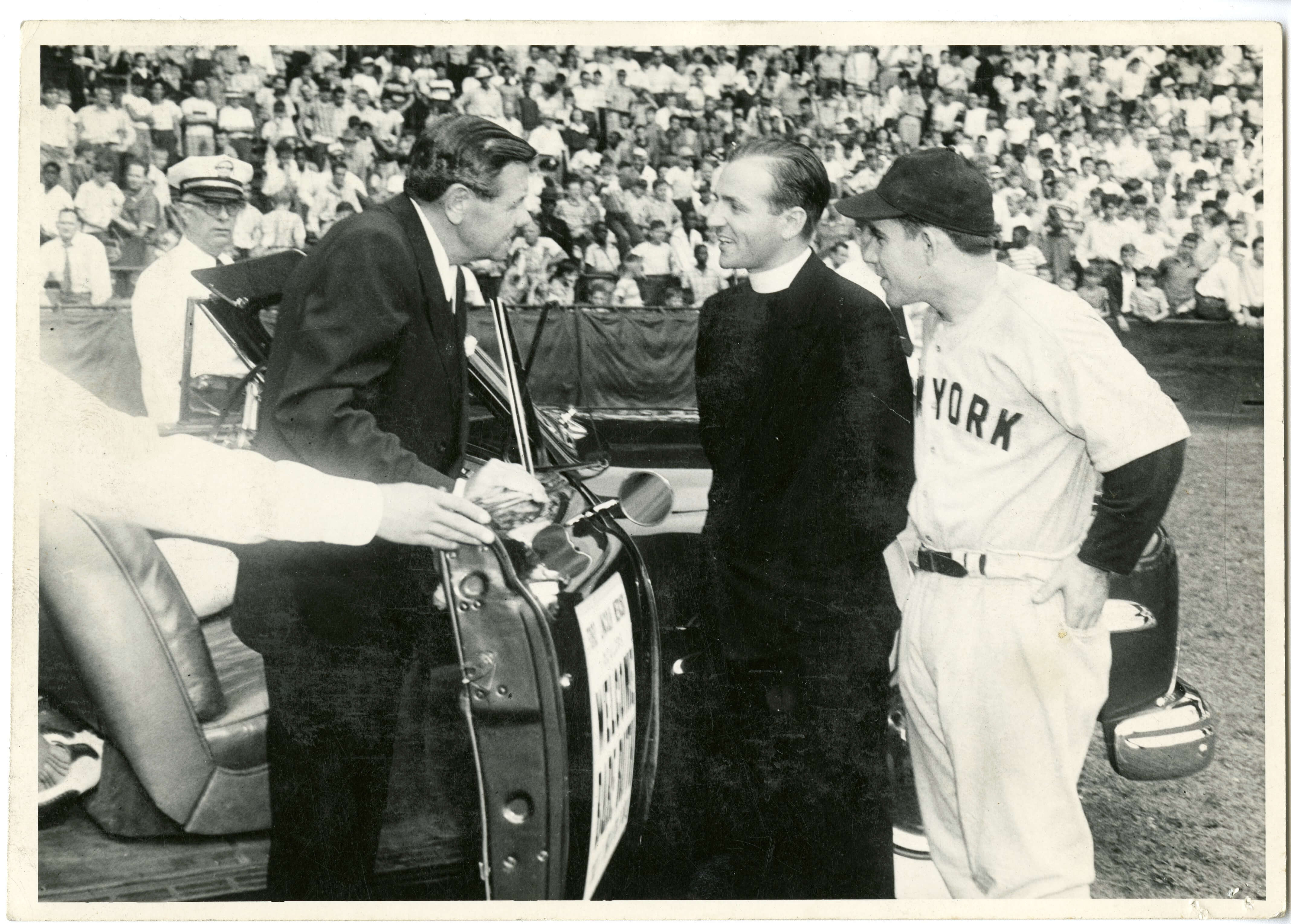
Auxiliary Bishop Charles Koester lived from 1915 to 1997. He was an avid sports fan, baseball in particular. While he was pastor of St. Ambrose Parish on the Hill, Yogi Berra and Joe Garagiola’s families were parishioners there before each became Major League Baseball players in 1946. Yogi Berra joined the New York Yankees, and Garagiola became catcher for the St. Louis Cardinals.
In these photographs, Bishop Koester and Yogi Berra meet Babe Ruth on the field on June 13, 1948 at Sportsman’s Park. This was Babe Ruth’s final visit to St. Louis; he died a few months later on August 16, 1948. Bishop Koester’s papers in the archives include more photographs, memorabilia and books regarding the St. Louis Browns baseball team, Yogi Berra, Babe Ruth and Joe Garagiola.
St. Mark High School Yearbook, 1940s
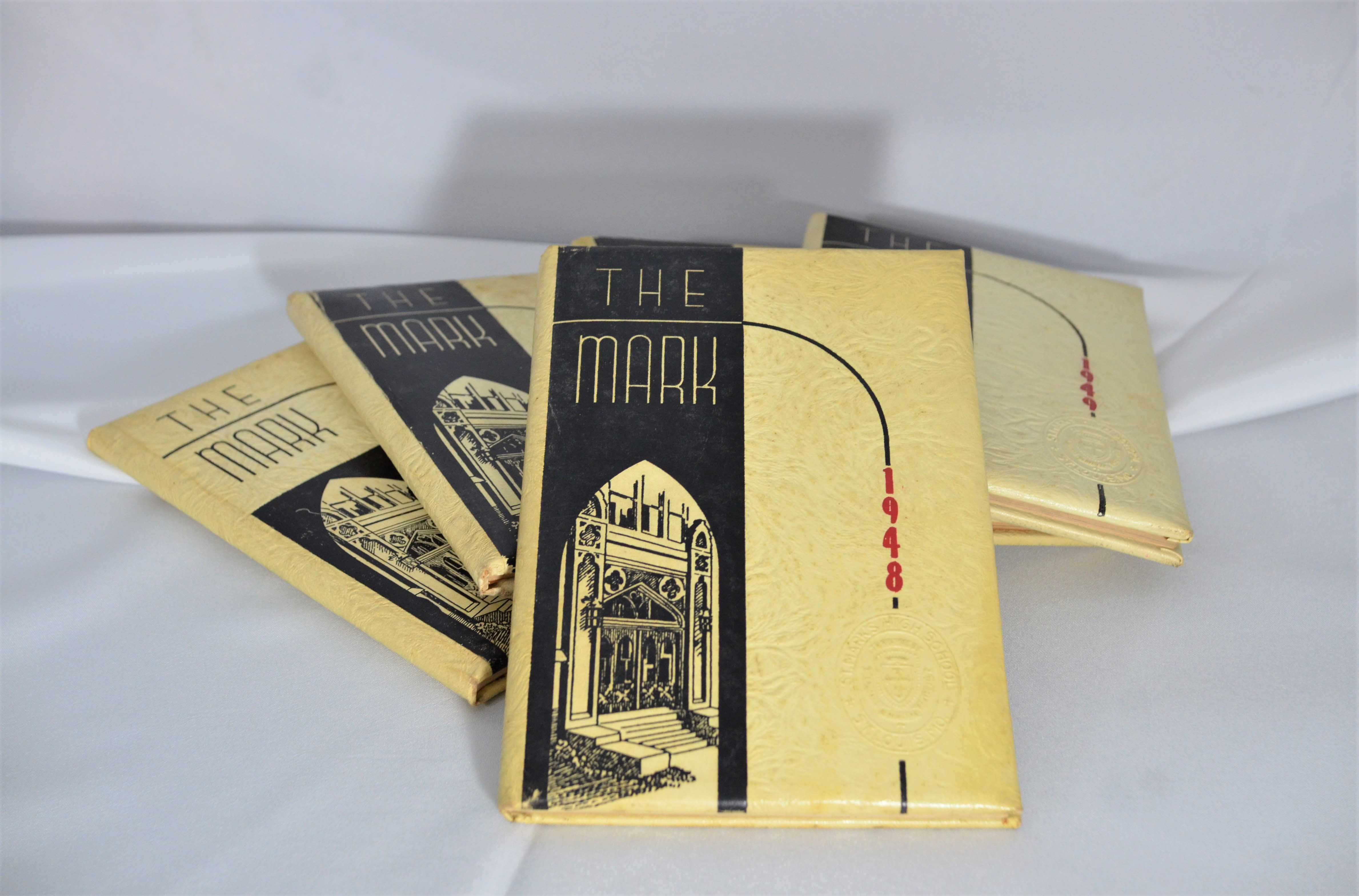
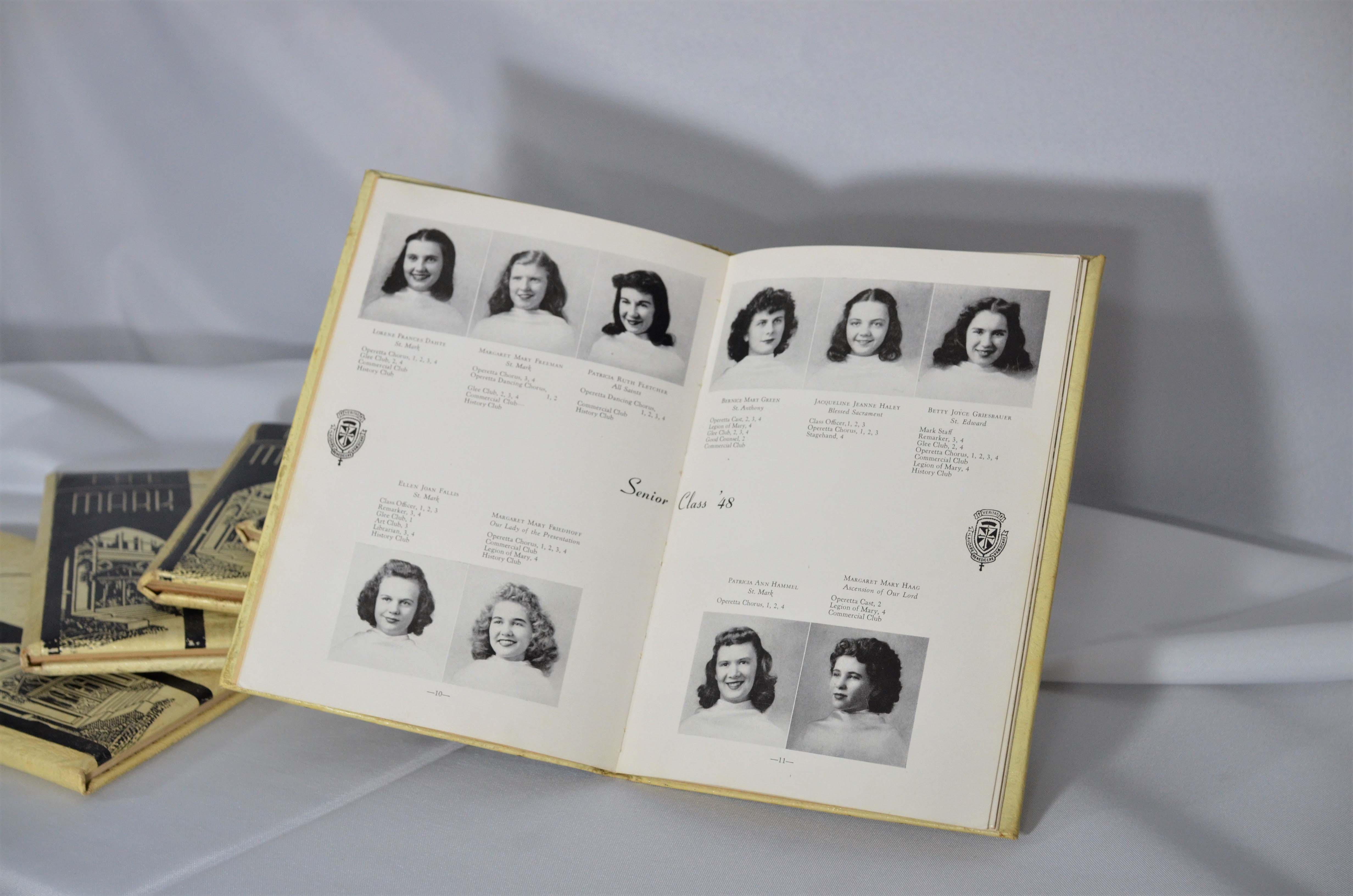
The archives has a complete set of yearbooks from St. Mark High School from 1934 to its closure in 1975. Yearbooks are a great snapshot of a school’s student body, faculty, extracurricular activities, and life at the school.
Signed Stan Musial Baseball Bat to Archbishop Justin Rigali, circa 2000

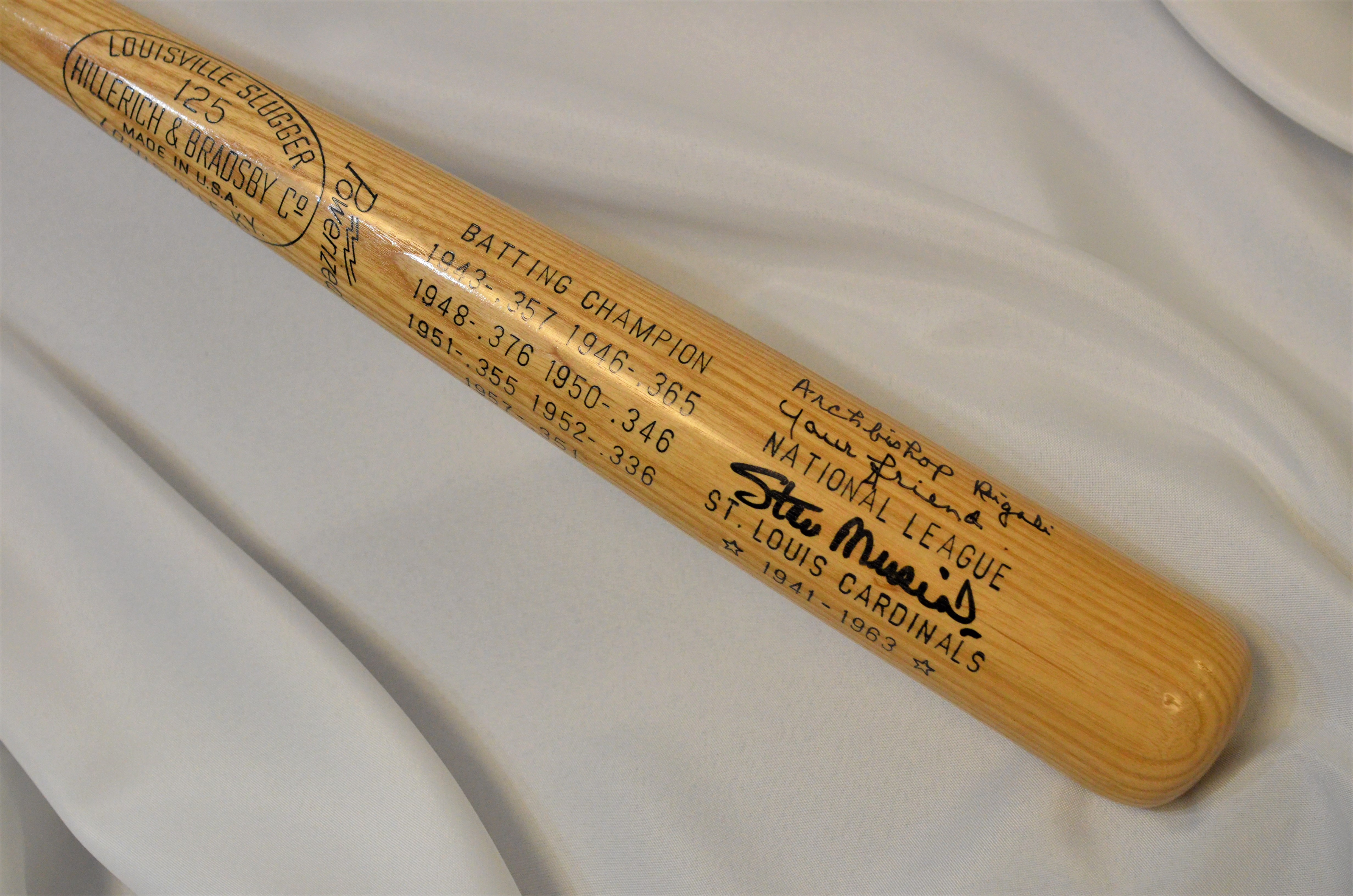
Hall of Fame Cardinals baseball player Stan Musial is well-remembered as being a generous and committed Catholic. He attended Annunziata Parish in Ladue, and parishioners remember him signing items from the trunk of his car and passing them out to fans after Mass. Musial died in 2013, and his funeral took place at the Cathedral Basilica, where thousands of people walked through for the visitation. The Funeral Mass was presided over by Cardinal Timothy Dolan, Archbishop Robert Carlson, and Bishop Richard Stika.
Saint Rose Philippine Duchesne
Saint Rose Philippine Duchesne is one of three patron saints of the Archdiocese of St. Louis, along with Saint Louis the King and Saint Vincent de Paul. Duchesne was born in 1769 and joined the Society of the Sacred Heart in 1804. From a young age, Sister Duchesne desired to do mission work among the Native Americans in the Americas. When Bishop William DuBourg toured Europe to recruit missionaries, Sister Duchesne begged Mother Madeleine Sophie Barat to serve with Bishop DuBourg. Her request was granted and she arrived at the shores of Saint Louis in 1818 with four other sisters. She quickly founded the first free school west of the Mississippi, and dedicated her life to education and missionary work.
Letter from Mother Rose Philippine Duchesne., RSCJ, to Bishop Joseph Rosati, CM, December 31, 1831
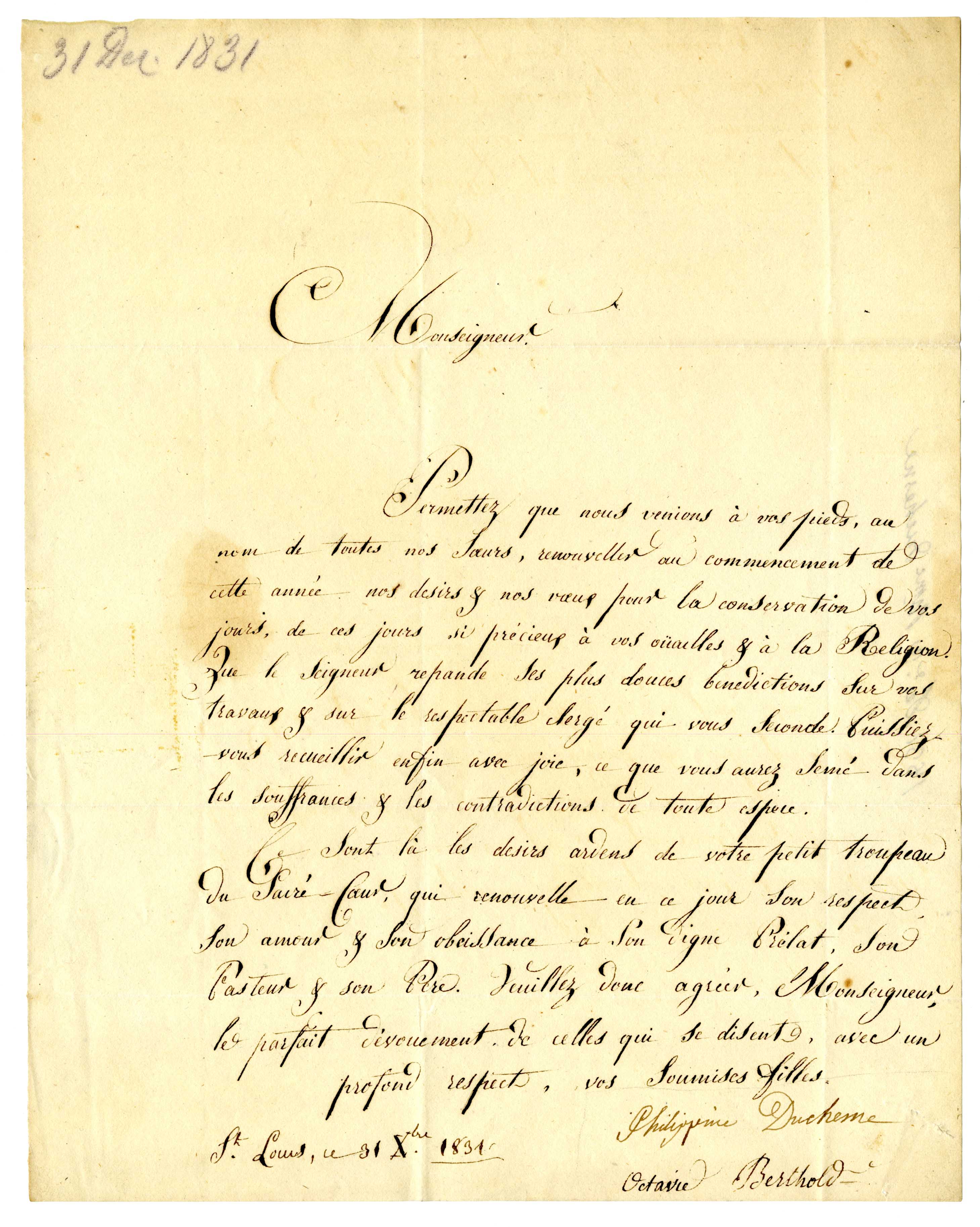
In this letter from Mother Duchesne to Bishop Joseph Rosati on December 31, 1831, she writes: Permit that we come to your feet, in the name of all our sisters, to renew at the commencement of this year our desires and our wishes for the preservation of your days, of these days so precious to your flock and to Religion. May the Lord pour forth his sweetest blessings on your works and on the respectable clergy who assist you.
Saint Peter Claver documentation of a miracle, Acta Originalia Processus Apostolici 1867
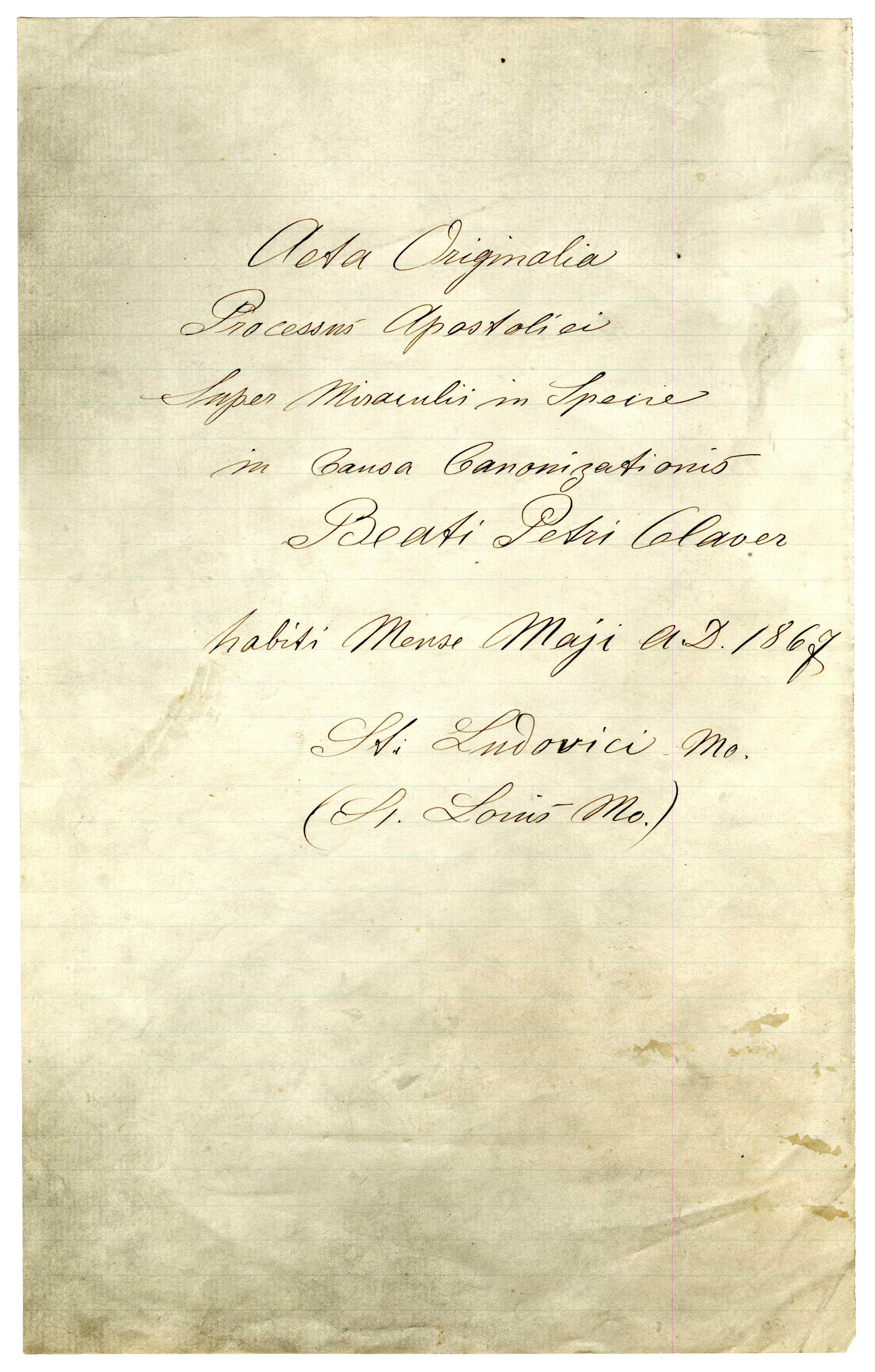
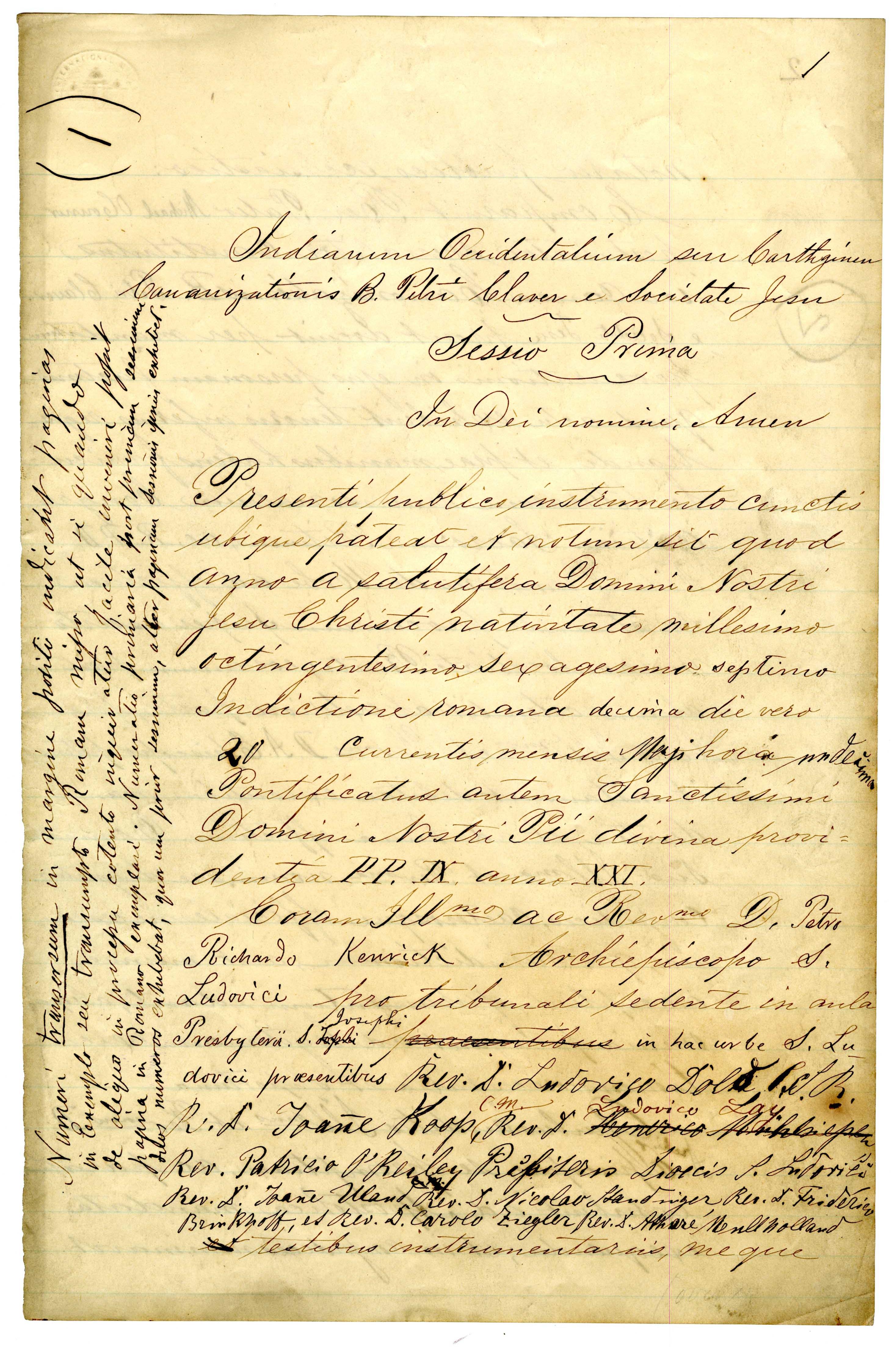
This is the official canonical investigation from 1867 that documents the miraculous cure of layman Ignatius Strecker by a relic of Blessed Peter Claver at St. Joseph parish in St. Louis (now the Shrine of St. Joseph). St. Peter Claver spent his life as a missionary to slaves in Cartagena, Columbia. On March 15, 1864, Fr. Francis Xavier Weninger SJ came to the Shrine of St. Joseph in the Archdiocese of St. Louis for a parish mission and preached about then Blessed Peter Claver’s intercessory powers. Mrs. Strecker was impressed by his message and told her husband who was dying from tuberculosis. Mr. Strecker came the next day and kissed the relic. He was healed and returned to work within a few days. Bishop Michael O’Conner, SJ led the investigation in St. Louis two years later. The miracle was formally declared authentic in Rome by Cardinal Bianchi in 1887, and St. Peter Claver was canonized in 1888. This remains the only confirmed miracle to occur in St. Louis.
Vestment of Bishop Joseph Rosati, circa 1830
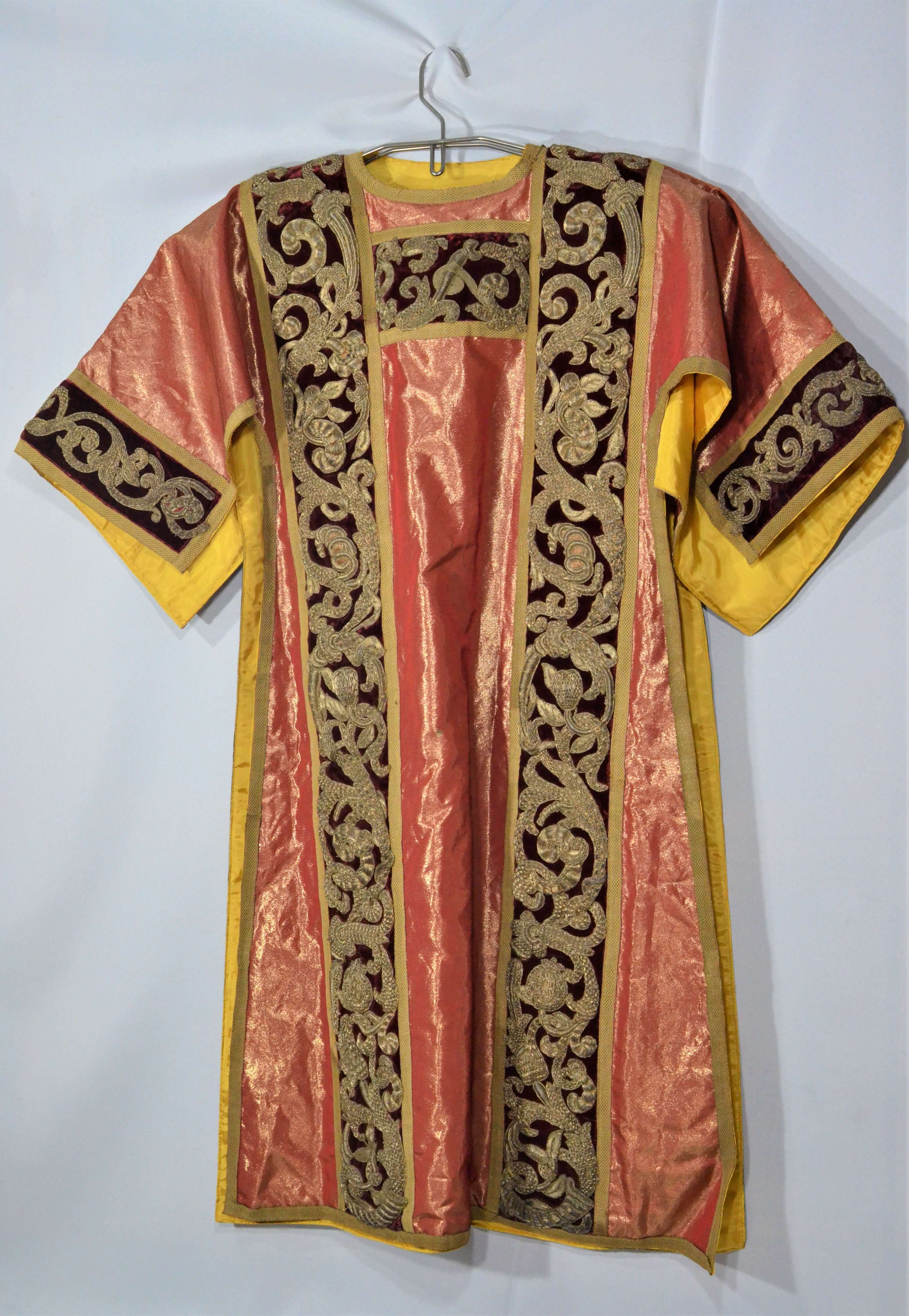
.jpg?ver=2020-10-28-153341-190)
This was one of Bishop Rosati’s vestments used to celebrate Mass at the Basilica of Saint Louis, King of France (the “Old Cathedral”). Handmade of silk and gold metal thread, the craftsmanship is impeccable. The vestment was likely imported from Europe. The red and gold colors would have been much more vibrant when Rosati wore it.